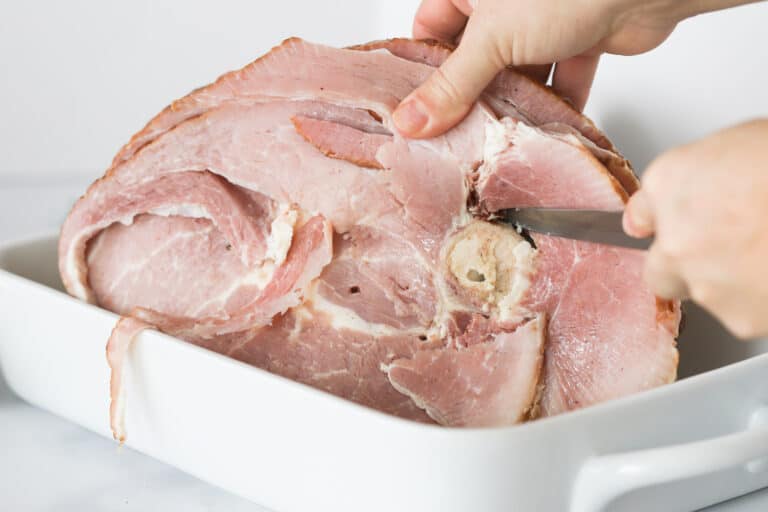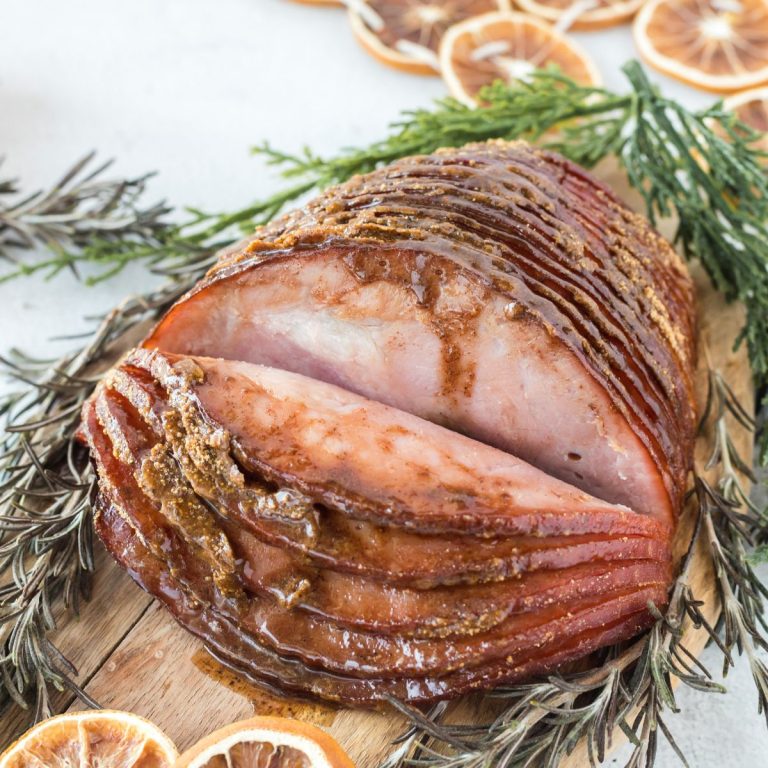
Unveiling the Shelf Life of Cooked Spiral Ham: A Culinary Conundrum
In the realm of festive gatherings and culinary delights, the spiral ham stands tall as a centerpiece, tantalizing taste buds with its succulent flavors. Yet, once the fanfare of feasting subsides, a pressing question lingers: how long does cooked spiral ham endure in the chilly confines of the refrigerator? Embark on a culinary odyssey as we dissect this dilemma, uncovering the factors that influence the ham’s shelf life and the intrinsic qualities that define it.
The ephemeral nature of cooked spiral ham demands our utmost attention. Its lifespan, a delicate balance of preservation and decay, hinges upon an intricate interplay of factors. Temperature, packaging, and the ham’s intrinsic characteristics dance in a harmonious waltz, orchestrating its sojourn within the refrigerator.
The Chilling Embrace: Refrigeration’s Role
Refrigeration, the culinary guardian of perishables, plays a pivotal role in extending the shelf life of cooked spiral ham. By suppressing bacterial proliferation, refrigeration slows the inexorable march of spoilage, granting the ham a reprieve from the ravages of time.
Optimal ham preservation demands a frigid embrace, with temperatures hovering between 32°F (0°C) and 40°F (4°C). This icy sanctuary inhibits bacterial growth, ensuring the ham’s integrity and palatable flavors.
Packaging Matters: The Art of Preservation
Beyond refrigeration’s icy clutches, packaging emerges as another critical determinant of cooked spiral ham’s longevity. Sealed within airtight confines, the ham remains shielded from external contaminants, safeguarding its delicate balance of flavors.
Vacuum sealing, a technique that extracts air from the packaging, further extends the ham’s shelf life. By eliminating oxygen, the primary catalyst for oxidative deterioration, vacuum sealing slows the inexorable march of spoilage, preserving the ham’s pristine qualities.
Ham’s Intrinsic Nature: A Symphony of Flavors
The intrinsic characteristics of the cooked spiral ham itself play a significant role in determining its shelf life. Hams cured with nitrates or nitrites, for instance, boast a longer lifespan than their uncured counterparts. These preservatives inhibit bacterial growth, ensuring the ham’s extended palatability.
Furthermore, the ham’s fat content influences its shelf life. Hams with higher fat content tend to have a shorter lifespan due to the inherent susceptibility of fats to oxidation and rancidity.
Expert Tips and Advice: Preserving Ham’s Culinary Essence
Harnessing the wisdom of culinary experts, we unveil invaluable tips and advice for maximizing the shelf life of cooked spiral ham:
- Rapid Refrigeration: Promptly refrigerate the cooked spiral ham after purchase or preparation. Delay invites bacterial proliferation, jeopardizing the ham’s integrity.
Airtight Storage: Seal the cooked spiral ham securely within airtight packaging. Vacuum sealing offers optimal protection against external contaminants and oxidative deterioration.
- Temperature Consistency: Maintain a consistent temperature within the refrigerator, ideally between 32°F (0°C) and 40°F (4°C). Fluctuating temperatures promote bacterial growth, compromising the ham’s shelf life.
Consumption Timeline: Cooked spiral ham retains its optimal quality for 3-4 days in the refrigerator. Beyond this period, the ham’s flavors and texture may deteriorate.
Frequently Asked Questions: Addressing Culinary Concerns
- Q: How can I tell if cooked spiral ham has gone bad?
A: Signs of spoilage include an unpleasant odor, slimy texture, or visible mold growth. Discard the ham immediately if any of these signs are present.
- Q: Can I freeze cooked spiral ham?
A: Yes, freezing extends the shelf life of cooked spiral ham for several months. Wrap the ham securely in airtight packaging before freezing.
- Q: How do I reheat cooked spiral ham?
A: Preheat the oven to 350°F (175°C) and place the ham in a roasting pan. Add a splash of water to the pan to prevent the ham from drying out. Reheat the ham for approximately 10-15 minutes per pound, or until it reaches an internal temperature of 140°F (60°C).
Conclusion: Savoring the Delicacy, Preserving the Moment
Unveiling the secrets of cooked spiral ham’s shelf life empowers us with the knowledge to savor its succulent flavors while preserving its culinary integrity. By adhering to expert guidance and understanding the intrinsic factors that influence its longevity, we can extend the ham’s presence in our culinary repertoire, delighting our palates and satisfying our cravings.
As you embark on your culinary journey, dear readers, we invite you to engage with this topic further. Share your experiences, ask questions, and delve deeper into the fascinating world of ham preservation. Let us collectively unravel the mysteries of this culinary delicacy, preserving both its flavors and our culinary memories.

Image: www.lacademie.com

Image: www.southerncravings.com
How To Cook A Kirkland Spiral Ham Plus A Glaze – FOOLPROOF! Nov 20, 20222. Packaging and Storage Conditions. The way the cooked spiral ham is packaged and stored also affects its shelf life. It is best to store the ham in an airtight container or wrap it tightly in aluminum foil or plastic wrap to prevent moisture loss and exposure to other odors in the fridge.